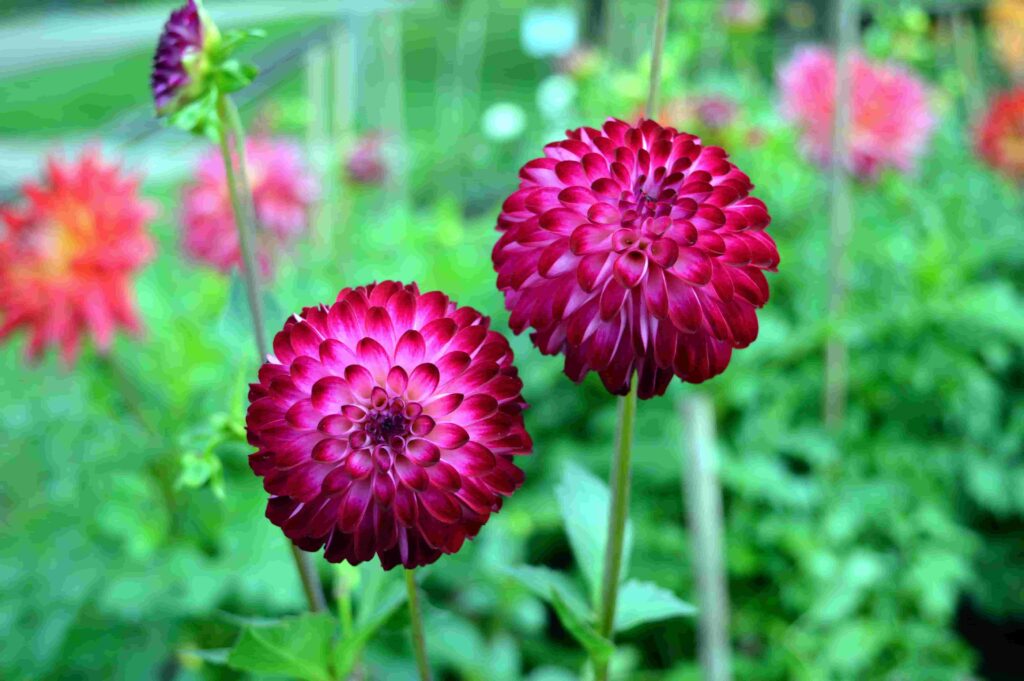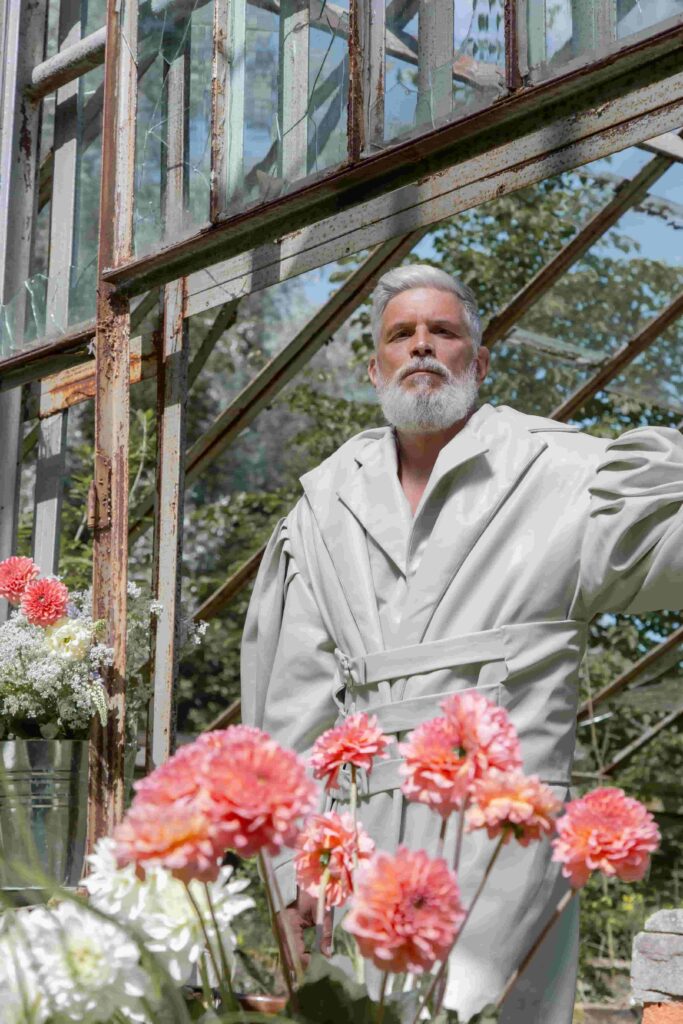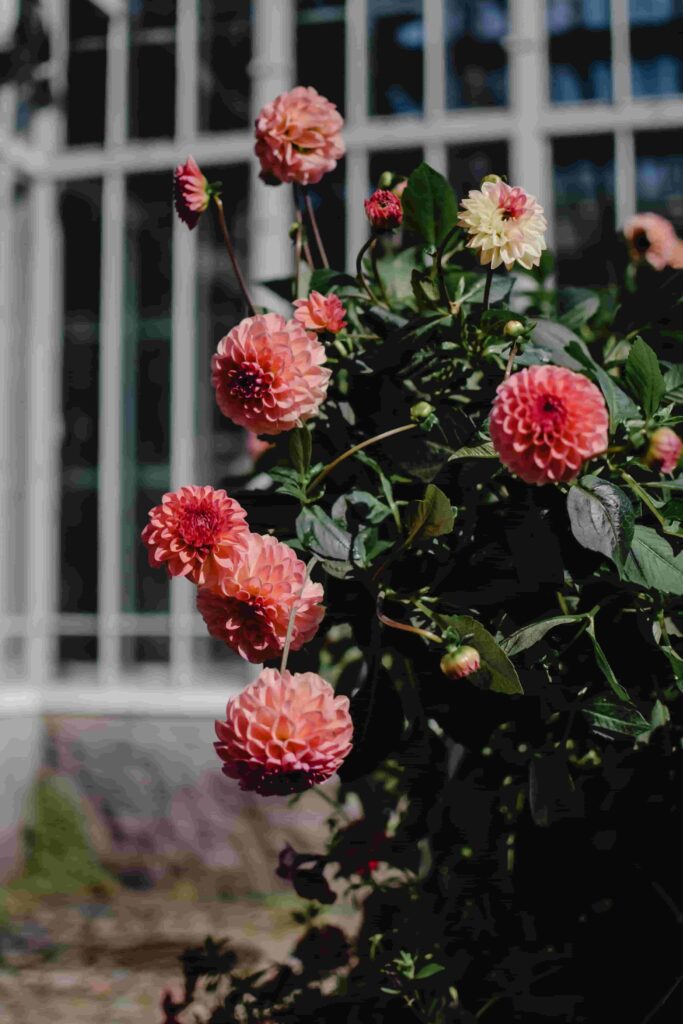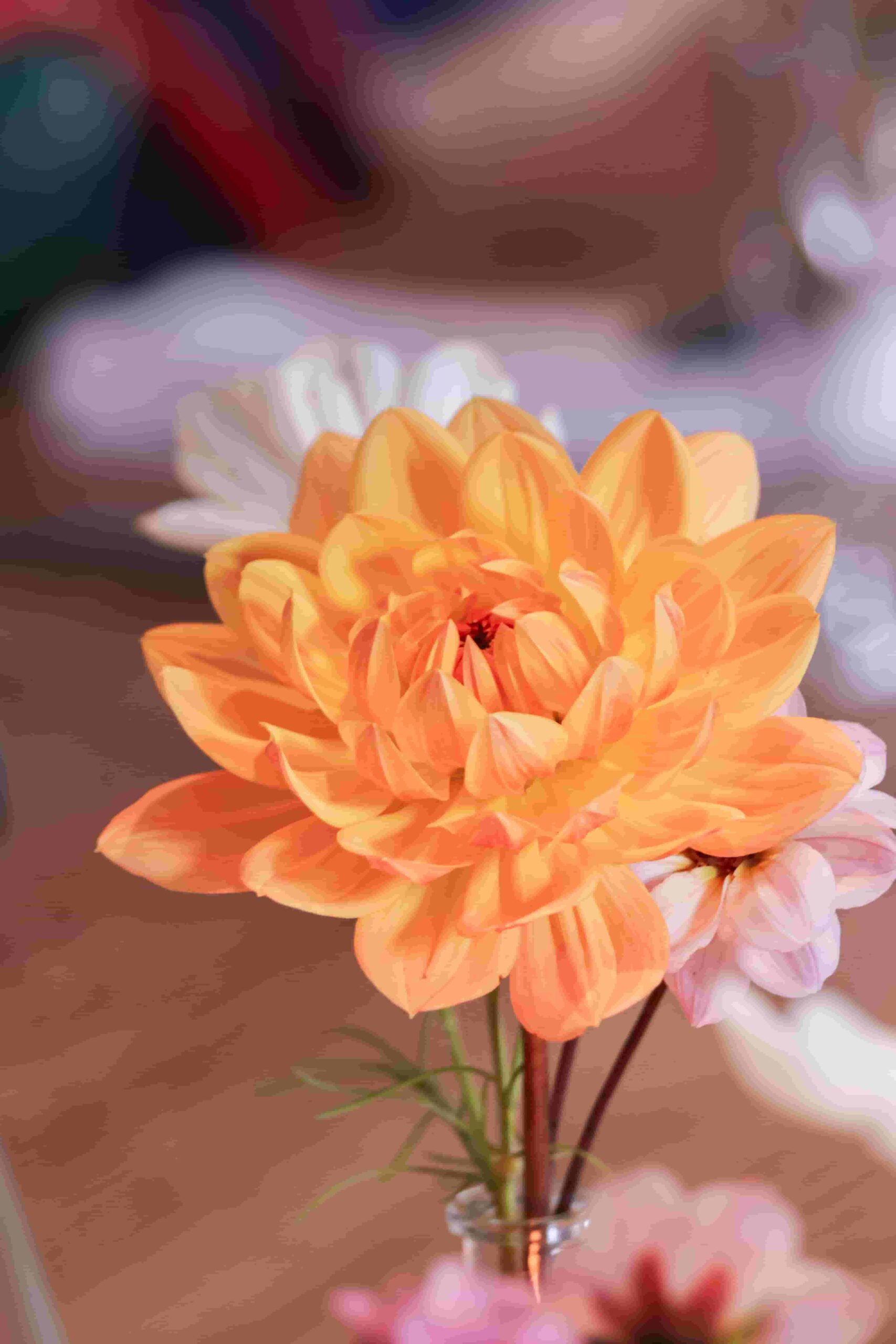परिचय
Dahlias are Beautiful flowers that available in a wide variety of colors, shapes, and sizes. Despite being native to Mexico and Central America, they are now well-known all over the world for their colorful flowers and adaptability. In this piece, we’ll look at the beauty of dahlias, how to grow them, and several ways to enjoy them.
1. Understanding Dahlias

What are Dahlias?
Dahlias are flowering plants belonging to the Asteraceae family. They are herbaceous perennials with tuberous roots that store nutrients for growth and bloom. Dahlia plants produce large, showy flowers with layers of petals, making them a favorite choice for gardens, floral arrangements, and competitions.
The History and Origin
Dahlia plants were originally cultivated by the Aztecs in Mexico. They were primarily grown for their tubers, which were used as a food source and a treatment for various ailments. These plants were introduced to Europe in the 18th century by Spanish explorers and quickly gained popularity among botanists and horticulturists for their captivating beauty.
2. Popular Dahlia Varieties
Dahlia plants come in various forms and sizes, each with its own unique charm. Let’s explore some of the most popular dahlia varieties:
Single-flowered Dahlia
Single-flowered dahlia plants have a single row of petals surrounding a central disc. They are known for their simplicity and elegance, often attracting pollinators with their nectar-rich blooms.
Cactus and Semi-Cactus Dahlia
Cactus and semi-cactus dahlia varieties have intricate, spiky petals that curve backward, resembling the shape of cactus flowers. These varieties create a striking visual impact and add texture to any garden or arrangement.
Pompon and Ball Dahlia
Pompon and ball dahlia plants feature fully double flowers with tightly packed petals, giving them a round and ball-like appearance. They are often used in cut flower arrangements and are adored for their perfect symmetry.
Dinnerplate Dahlia
Dinnerplate dahlia plants are renowned for their exceptionally large blooms, reaching up to 12 inches in diameter. These captivating flowers make a bold statement in the garden and are a favorite among floral enthusiasts.
3. Growing Dahlias

Choosing the Right Location
It’s crucial to choose a site that receives at least six to eight hours of direct sunshine per day because dahlia plants prefer full sun. Make sure the area is well-drained to avoid waterlogging, which can cause root rot.
Soil Preparation and Planting
Before planting dahlias, prepare the soil by incorporating organic matter such as compost or well-rotted manure. This improves soil fertility and drainage. Plant the tubers in spring after the danger of frost has passed, ensuring they are placed at a depth of 4-6 inches and spaced about 18-24 inches apart.
Watering and Fertilizing
Dahlia plants require consistent moisture, especially during their active growth period. Once or twice a week, give them a good thorough watering to keep the soil uniformly moist but not soggy. Applying a balanced fertilizer every four to six weeks helps promote healthy growth and abundant blooms.
Pruning and Supporting Dahlias
To encourage bushier growth and more flowers, pinch out the center shoot when the dahlia plant reaches a height of 12-18 inches. Additionally, provide support to taller varieties by staking them to prevent bending or breaking due to wind or rain.
Dealing with Pests and Diseases
Dahlia plants are susceptible to pests such as aphids, slugs, and snails. Regularly inspect the plants and take appropriate measures, such as using organic insecticides or physical barriers, to prevent infestations. Common diseases affecting dahlias include powdery mildew and gray mold, which can be controlled by providing adequate air circulation and avoiding overhead watering.
4. Dahlias in the Garden

Dahlias as Cut Flowers
One of the most delightful aspects of growing dahlias is the opportunity to enjoy them as cut flowers. Cut them early in the morning when the temperatures are cool, and place them immediately in a bucket of water. Remove any leaves that would be submerged in water to prevent bacterial growth and change the water every other day for extended vase life.
Companion Planting with Dahlias
Dahlia plants can be paired with a variety of companion plants to create visually appealing and harmonious garden displays. Consider planting them alongside salvias, zinnias, or ornamental grasses to provide contrasting colors and textures.
Creating Dahlia Borders and Beds
Dahlia plants make excellent additions to garden borders and beds. Mix different varieties to create a stunning display of colors and heights. Place taller varieties toward the back of the border and shorter ones toward the front for optimal visibility and aesthetics.
निष्कर्ष
Dahlias are extraordinary flowers that captivate gardeners and enthusiasts alike with their beauty and versatility. Whether grown in gardens, containers, or used in flower arrangements, dahlias bring a touch of elegance and vibrancy to any setting. With proper care and cultivation techniques, you can enjoy the splendor of dahlias and create stunning displays that will leave a lasting impression.
FAQs (Frequently Asked Questions)
Q: How often should I water my dahlias?
A: Dahlias require deep watering once or twice a week, ensuring the soil remains evenly moist but not waterlogged.
Q: Can dahlias be grown in containers?
A: Yes, It is possible to cultivate dahlias safely in containers. Choose a large enough container with good drainage and use a well-balanced potting mix.
Q: How do I protect dahlias from pests and diseases?
A: Regularly inspect the plants for pests and diseases. Use organic insecticides or physical barriers to prevent infestations. Ensure adequate air circulation and avoid overhead watering to control diseases like powdery mildew and gray mold.
Q: Are dahlias suitable for cut flower arrangements?
A: Absolutely! Dahlias are excellent cut flowers. Cut them early in the morning, remove submerged leaves, and place them in a bucket of water. Change the water every other day for extended vase life.
Q: What are some companion plant
A: Consider planting dahlias alongside salvias, zinnias, or ornamental grasses for beautiful and complementary garden displays.

